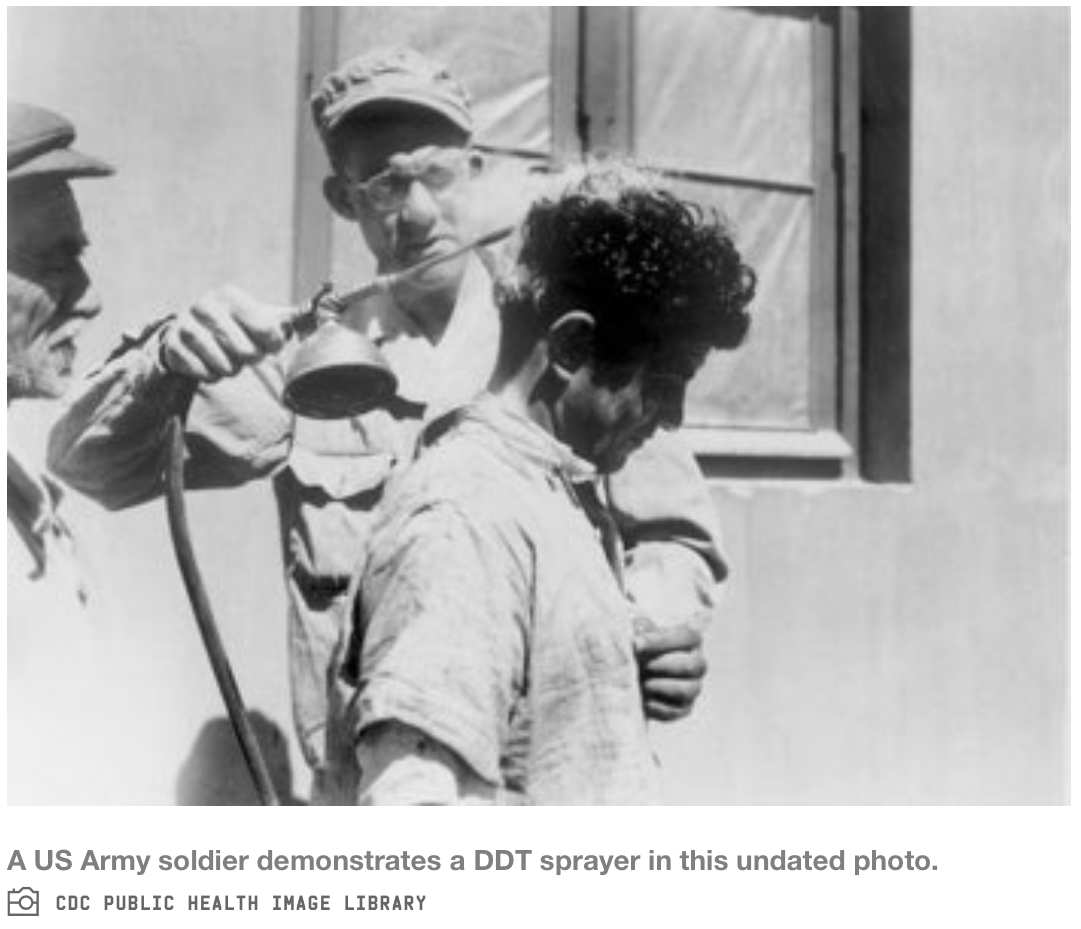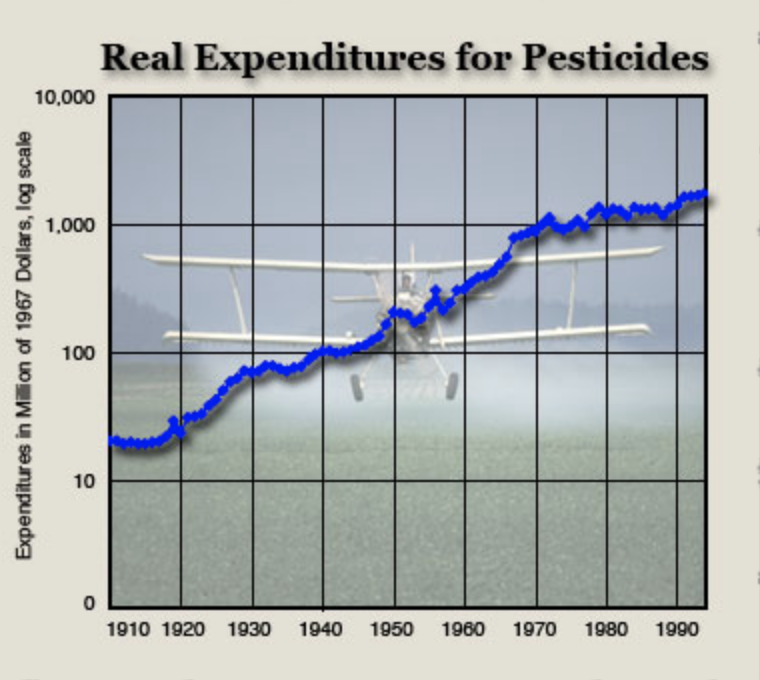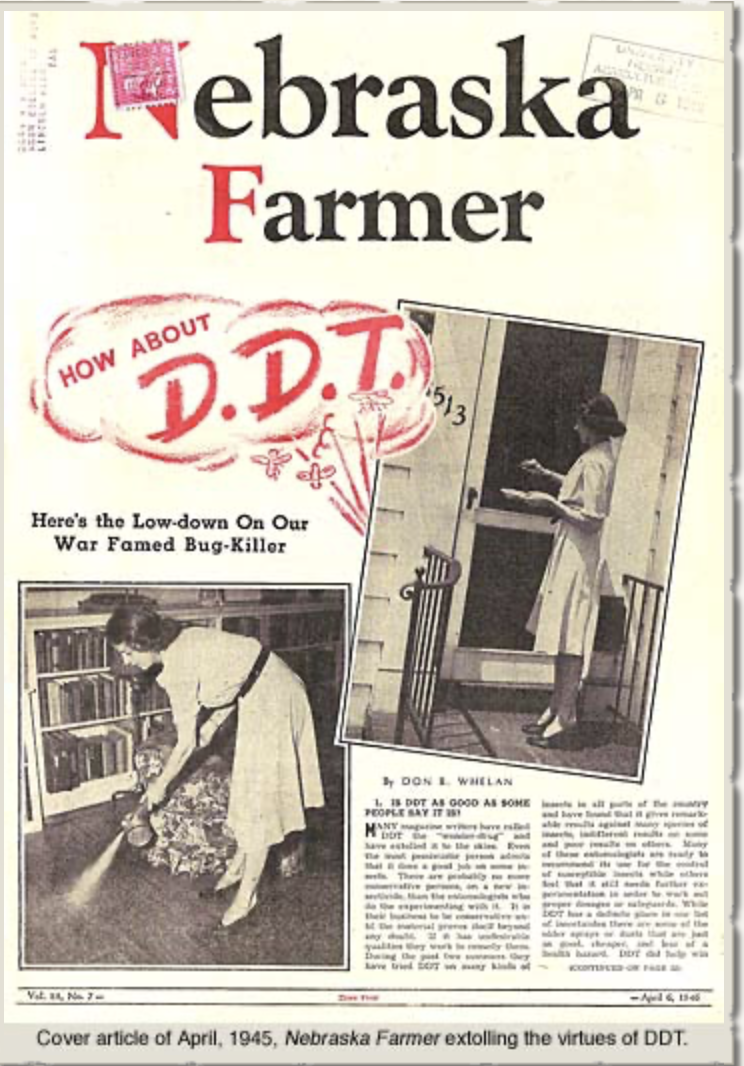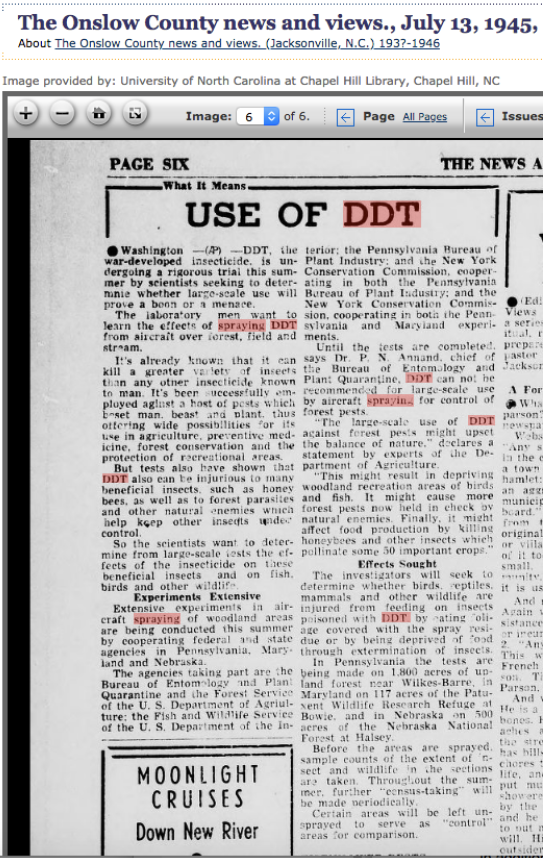Rachel Carson: Catalyst of the Environmental Movement


During World War II, the synthetic compound DDT was first used to control lice and malaria among soldiers. Paul Hermann Muller obtained a patent in 1940 for it to be used as an insecticide and it was for sale in 1942.
“Since much of the war was fought in tropical areas, the value of DDT in destroying disease-bearing insects was obvious. The early work seemed to indicate that the substance was completely safe for humans.”
~ Henry Leicester, from Complete Dictionary of Scientific Biography at Encyclopedia.com, updated 25 April 2020
A 1944 US Navy Training video instructed personnel on the use of DDT as an insecticide to kill mosquitoes in military camps, to prevent diseases like malaria. They were told to mix powdered DDT concentrate with fuel oil to spray it more efficiently.

CDC Public Health Image Library, Undated Photo
"World War II was the first war that fewer people died from diseases (like typhus and malaria) than bullets and bombs. DDT was an insecticide that was discovered in 1939 and was used extensively by the U.S. military during the war. The military put it everywhere, in the streams, on the mattresses, in the forests, in the trenches, and all around the camp. But what they didn’t know was that many other organisms were being affected by this deadly chemical."
~ Bill Ganzel, Farming in the 1940's
No environmental tests were run before DDT was first sold and no one knew of any dangers. People liked DDT because it killed insects and they did not have to reapply it. See the below article written by US Army Chief of Preventive Medicine, Brig. Gen. James Stevens Simmons:
CLICK BELOW AND USE SCROLL BAR ON RIGHT TO REVIEW
Brig. Gen. James Stevens Simmons, Saturday Evening Post 1945
The agriculture and chemical industries (agri-chemical industry) were profitable after DDT became popular in 1945 and improved the US economy. Farmers and the public enjoyed pest-free living. People were assured extensive testing was underway.

Bill Ganzel, The Golden Age of Pesticides, from Farming in the 1950s & 60s, accessed April 2020
"As you can see in the chart at right [above], real expenditures for pesticides – in the equivalent of 1967 dollars – shot up. Note that the scale on the chart is a logarithmic scale, so the actual increase would normally appear even higher.
~ Bill Ganzel, The Golden Age of Pesticides, from Farming in the 1950s & 60s, accessed April 2020

Advertisement by Penn Salt Chemicals in Time Magazine 30 July 1947

Don Whelan, Nebraska Farmer, April 1945

This synthetic chemical was stable or would not break down, meaning it could harm the environment and humans. DDT stayed in the soil, water and all living organisms. Paul Hermann Muller was aware and noted it in a 1946 article published in Helvetica chimica acta. By 1948, he had earned a Nobel Prize for his discovery and widespread use was building the US economy.
"In establishing his criteria for the properties of an ideal insecticide, Müller had not considered the possibility of the accumulation of the agent in various biological species until it reached dangerous proportions. He was not unaware of this possibility, however, for in concluding his 1946 article he wrote, ‘Pyrethrum and rotenone, like all natural insecticides, are completely destroyed in a short time by light and oxidation, as opposed to the synthetic contact insecticides which have been shown to be very stable. Nature must and will behave in this way, for what a catastrophe would result if the natural insecticide poisons were stable. Nature plans for life and not for death!’"
~ Henry Leicester, from Complete Dictionary of Scientific Biography at Encyclopedia.com, updated 25 April 2020